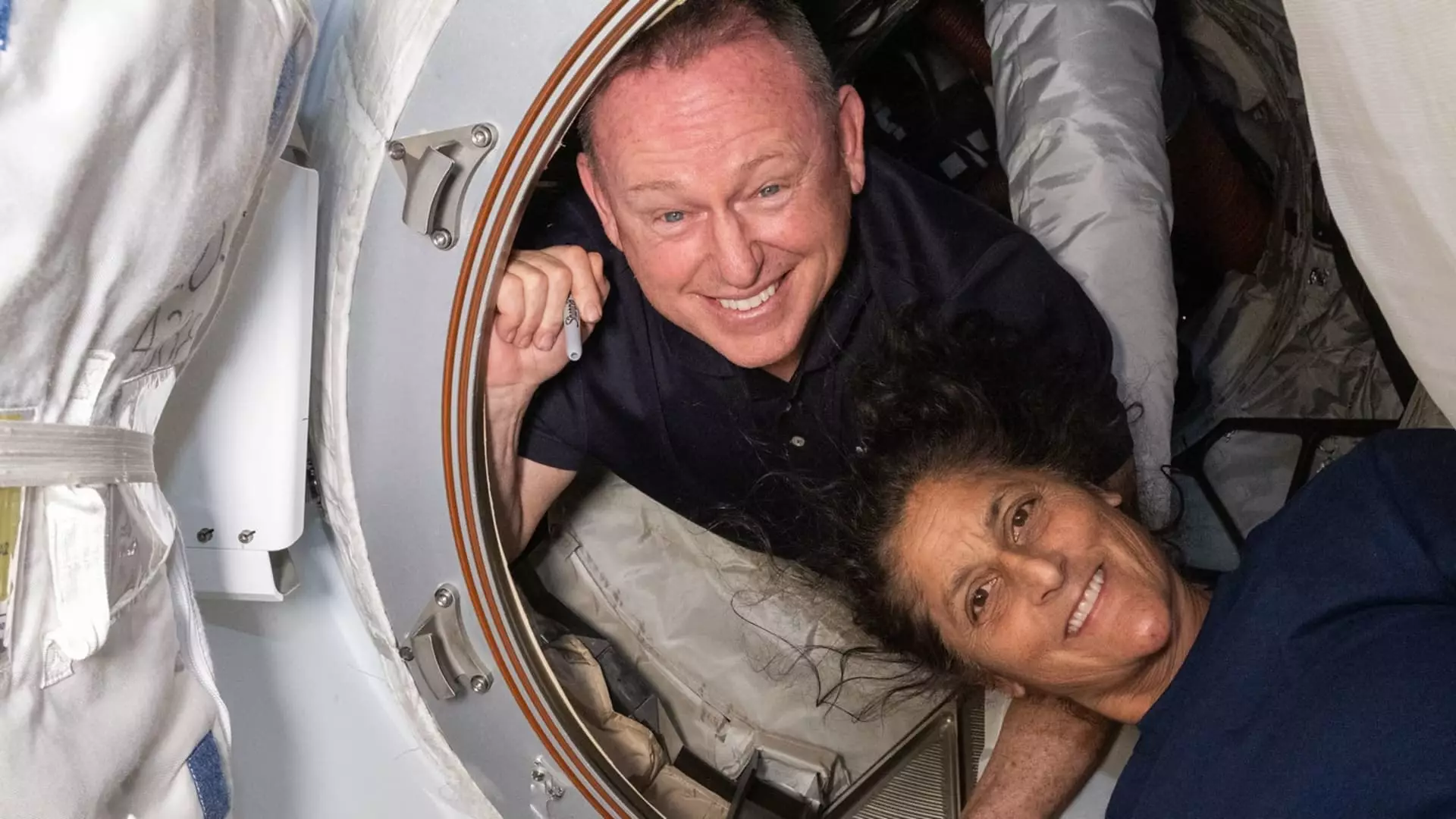Space travel has always been a mix of awe and unpredictability, but recent events surrounding the Boeing Starliner embody this duality in a stark way. The saga of astronauts Butch Wilmore and Suni Williams, who intended to embark on a brief nine-day mission, highlights some critical failings that should be addressed as we march further into a new era of space exploration. Rather than being a triumphant moment for Boeing, this misadventure exposes shortcomings that go beyond technical challenges; it delves into the clashing interests of politics, industry, and the complexities of scientific endeavor.
In June, Wilmore and Williams launched aboard a Boeing Starliner capsule, designed to be a robust competitor to SpaceX’s Dragon spacecraft. However, what was anticipated to be a short test flight turned into a frustrating marathon due to malfunctioning thrusters during the docking process. Instead of returning home as planned, our two astronauts became unintentional guinea pigs in Boeing’s failed test of its own capabilities. The flight was supposed to cement Boeing’s reputation as a leading partner for NASA, yet all it managed to do was cast a shadow on its credibility.
The Political Spectacle
The launching pad for this debacle was inevitably drenched in politics. The interference of leadership can taint even the purest scientific endeavors. When President Trump insinuated that the astronauts were “stranded,” it stirred a political firestorm. His narrative, rooted in a need for media visibility, called into question the navigational competence of NASA and Boeing alike. To sway public opinion, he unwittingly transformed Wilmore and Williams into political pawns in a broader game, jeopardizing the very fabric of accountability and operational integrity in space missions.
Such political narratives are not just harmful—they risk undermining confidence in the entire industry. Should emotional rhetoric cloud the judgment of those at the helm of NASA? It serves as a reminder that space exploration should not be about winning political favors but about the resilience and reliability of aerospace technology. The stakes are much higher than mere press coverage; lives are at risk, and public trust is paramount.
Unraveling the Trust Factor
NASA’s decision to rely on SpaceX to return Wilmore and Williams, rather than Boeing’s Starliner, is emblematic of a growing chasm in trustworthiness. To send astronauts to live and work in the International Space Station is no simple undertaking; it requires faith in the vehicle that will return them to Earth. If Boeing, a titan in the aerospace industry, can falter so grievously, then the implications extend far beyond the fate of two astronauts—they reflect a systemic risk that could endanger future missions and even halt America’s competitive edge in space.
Moreover, with the staggering losses amounting to $2 billion on the Starliner project, questions arise about Boeing’s long-term viability in the crewed space domain. The future seems bleak if they cannot learn from these crucial missteps and rectify their operational protocols. Public funds and taxpayer trust are not to be trifled with, and the ramifications of continuing to overlook systemic inadequacies could be catastrophic.
The Human Element
Amid the unfortunate delays and daunting situations, Wilmore and Williams display a commendable level of professionalism. Their acceptance of the situation—asserting they feel neither abandoned nor overlooked—is a comforting testament to the human spirit in the face of adversity. Yet one must wonder: how much of this is a coping mechanism versus genuine sentiment? After all, each day spent adrift can exacerbate homeward longing, making their plight poignantly more challenging. Williams’ anticipation to reunite with her family and pets is relatable, yet it underlines a broader issue of how extended missions impact the mental well-being of astronauts.
Ironically, while their work onboard the ISS remains significant, space is not simply a lab. It is a reflection of human endeavor—mistakes, triumphs, and everything in between. The extended stay for both astronauts may have enhanced their scientific contributions, but it also raises questions about the delicate balance between mission objectives and crew well-being.
Seeking a Future in the Stars
Ultimately, the Boeing Starliner crisis is a complex tableau. It breaches themes of trust, accountability, and human resilience in unprecedented ways. As we look to the stars, our aspirations should not only encompass technological prowess but also a commitment to responsibility. The journey of Wilmore and Williams serves as a clarion call for all of us to reassess our partnership in space travel. We have to prioritize genuine progress over political spectacle; the future of space exploration relies on it.

